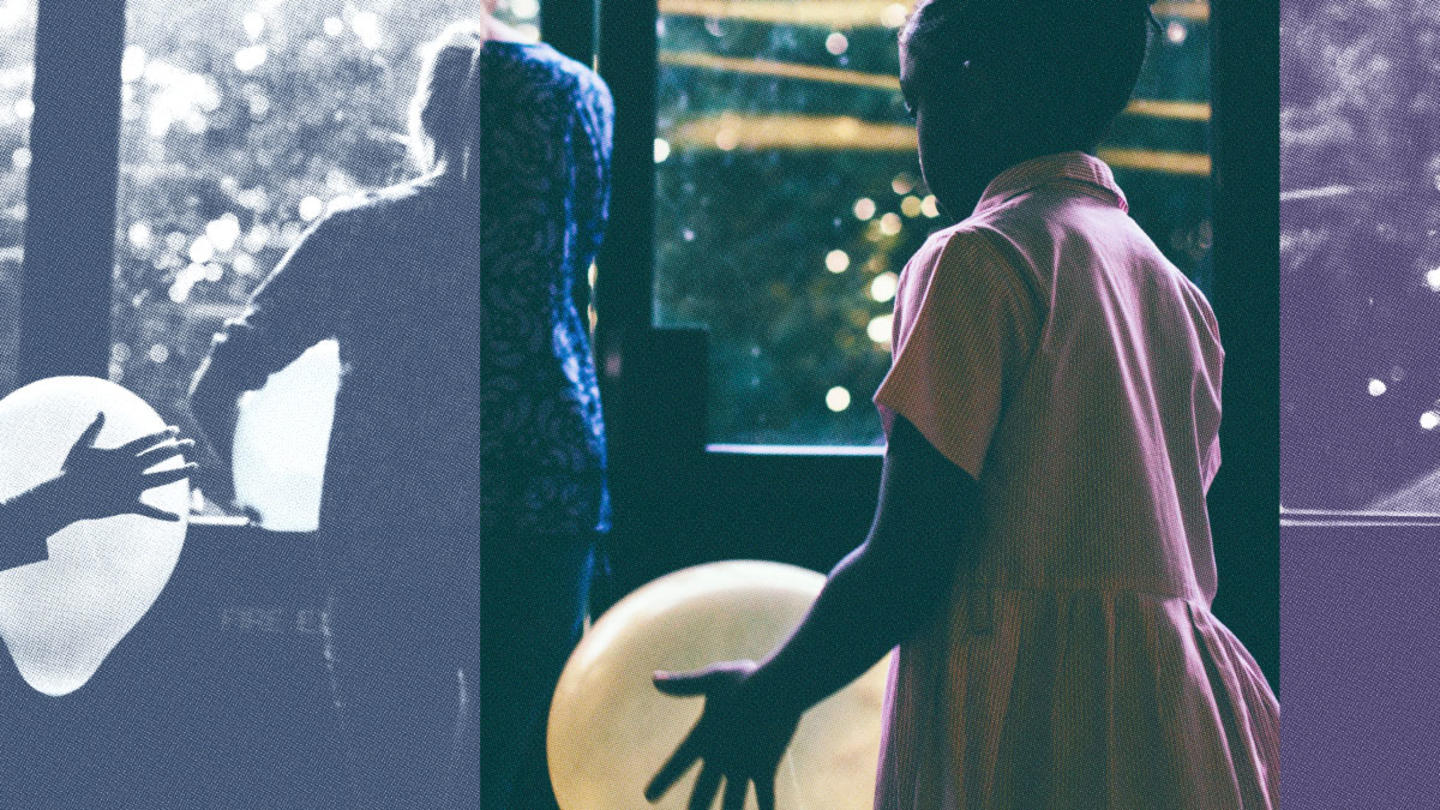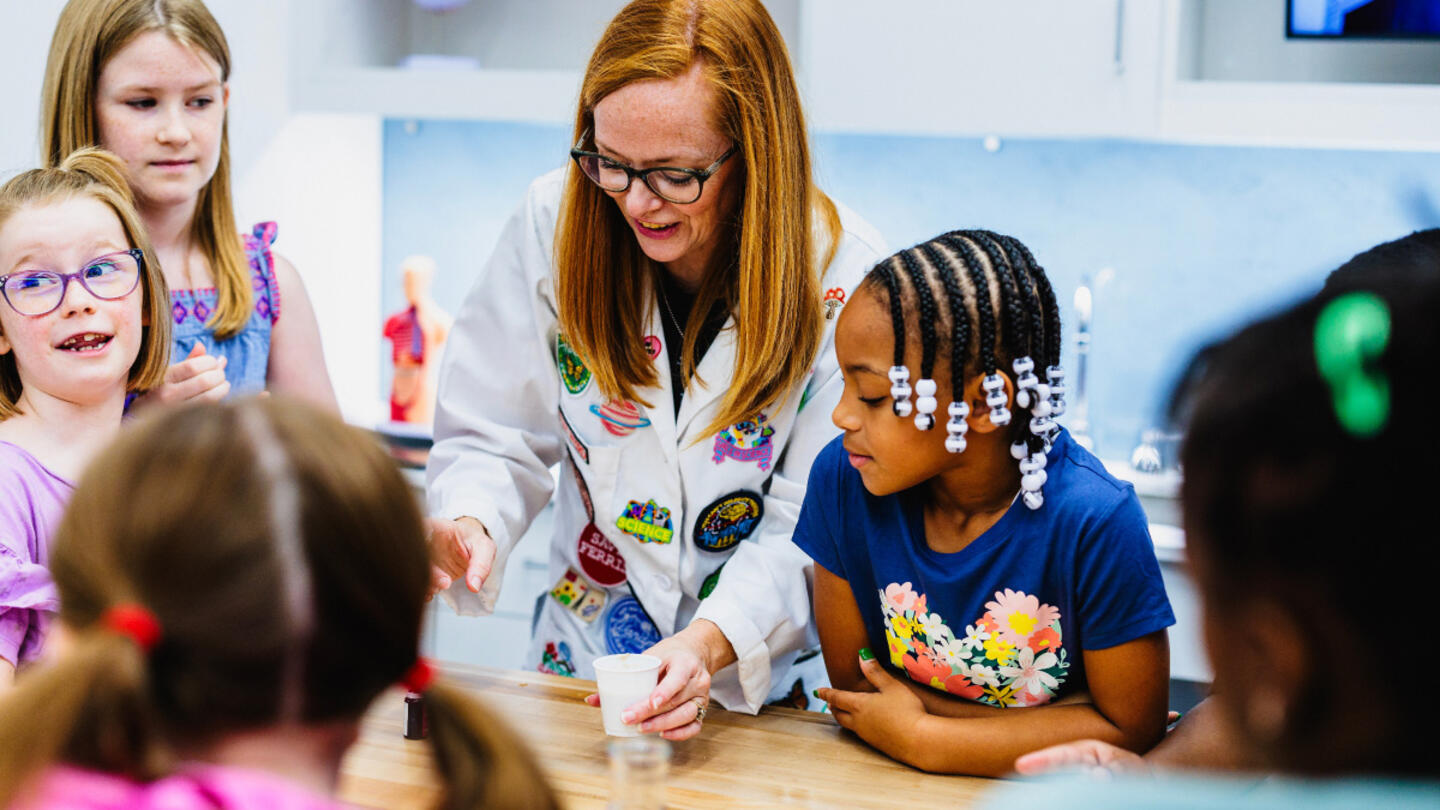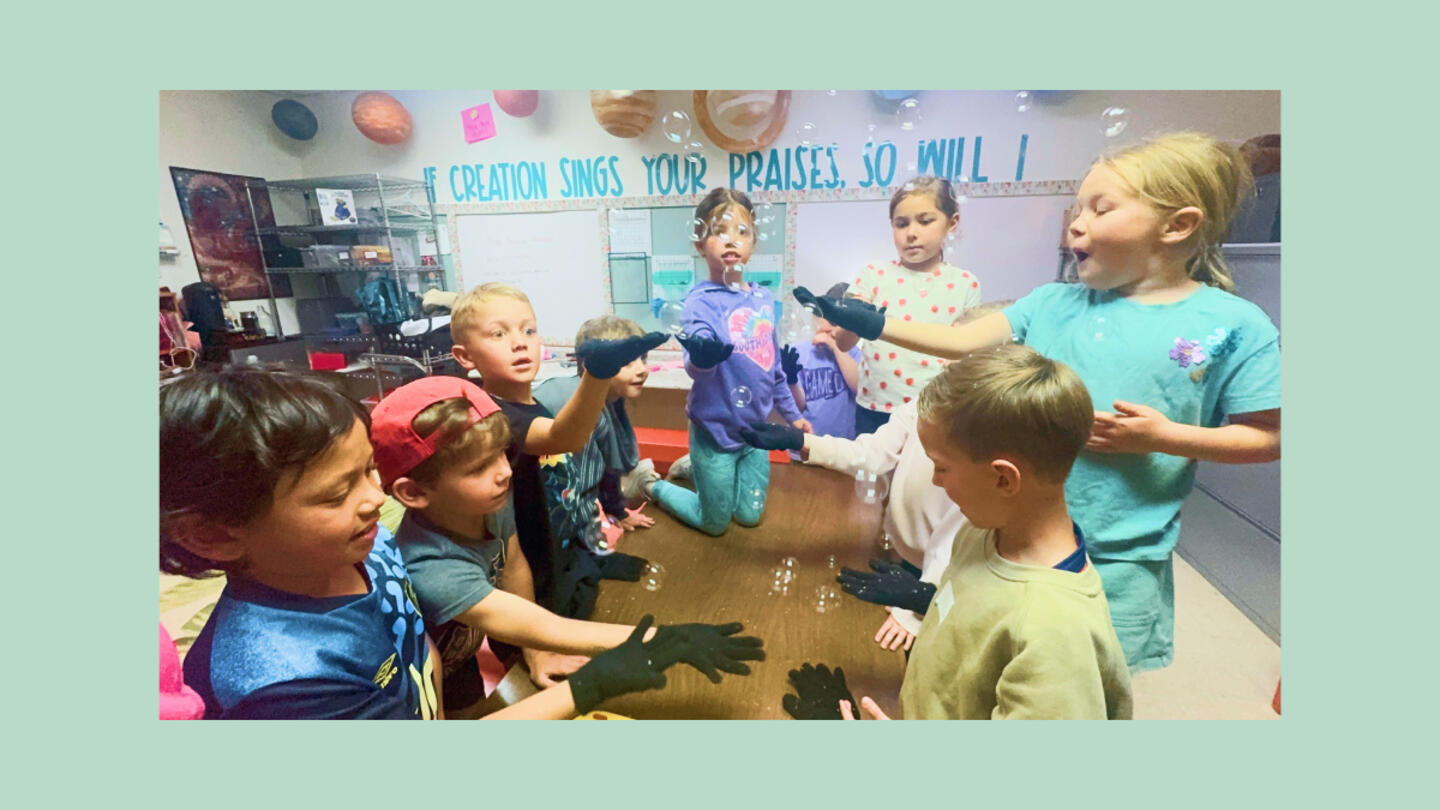Imagine walking into a preschool classroom and the first thing you notice is peace. Imagine 18 students spread throughout the room independently learning. They are calm. They are engaged. This isn't a pipe dream.
This is what it's like to walk into a Montessori classroom. "There's just this sense of peace and calm," says Erica Cantoni, who leads national development at Wildflower Foundation, a nonprofit community of more than 60 Montessori schools. "The kids are doing their work, and they take it quite seriously."
Montessori classrooms prove what can happen when adults treat children's work as important: The children feel seen. They grow up curious, open, unafraid to learn. Compared to students in traditional education models, Montessori-educated students have more positive outcomes both academically — language, math, social studies — and nonacademically — in their executive functioning, their creativity, and their social-emotional regulation.
Last year, Wildflower established a public charter in Washington, D.C., with a vision for opening six community-embedded teacher-led Montessori microschools over the next four years. The first one, Riverseed School, opened in October 2022. Ebony Marshman and Zani Dalili-Ortique, the school's founding leaders, believe in the Montessori principles of "freedom within limits," "wait and see," and "follow the child." These principles keep the focus on the child and their educational needs.
The Montessori model is the opposite of one-size-fits-all education. In Montessori classrooms, each child's natural curiosity and desire to learn is respected and encouraged. Children are offered self-determination — opportunities to explore their own curiosity and to follow their own unique path. Eventually, the idea is they can find their unique contribution to the larger community and society. It starts early, but the effect lasts a lifetime.
Standardized education saps children of their motivation
Montessori is one of many education models that focus on the needs and interests of individual children. There is no one right way to educate young people, but the standardized education system ignores the uniqueness of each individual child.
Standardized education models are sapping children's motivation to learn. Two-thirds of students are disengaged by the time they reach 12th grade. One-size-fits-all curriculums set the expectation that all children should learn the same way about the same things at the same pace. In order to meet this expectation, children ignore their own interests and label them "unimportant."
Grades label a student's work as "good or bad," and while they are effective short-term motivators, the effect wanes over time. Research has found that when students are given autonomy over a task in a no-grade environment, they are more interested in the task and more motivated to finish it.
This makes sense to Marshman, who has taught in both traditional and Montessori classrooms. "When you look at traditional models of schools being led by administrators," she says, "it's like everyone is trying to do, do, do, perform, perform, perform, but you can't perform learning. You have to just be in it." Without a teacher saying "you're right, you're wrong," children retain their sense of wonder. They continue to learn and be engaged — because they want to, not because they're trying to live up to a standard expectation.
Montessori classrooms provide 'freedom within limits'
Montessori classrooms are child-centered. "The environment is carefully designed to have lessons and books that spark curiosity — things that will draw children in," Wildflower Co-founder Katelyn Shore explains. "For example, three-year-olds love small things. So lots of small things are in the environment because they're drawn to them, and it's designed for them to have independence."
Children are taught to think of the space as their own. They are free to move about and choose the activities they want to do. Often, these end up being activities the children have designed themselves using the resources of the classroom. For example, a child who is playing with water cups might wonder what happens when he pours the water into a bucket. He doesn't need permission. He can find a bucket and start his experiment.
Children can be creative problem solvers and explorers without depending on direction from an adult. It's a practice in self-actualization that traditional education models run counter to.
At Riverseed, Marshman says the environment provides structure without being oppressive. This type of structure doesn't restrict a child's sense of liberty. It's more like setting supportive boundaries. The environment "is supporting and building them up," Marshman says. It's the Montessori principle of "freedom within limits."
Shore runs the first Wildflower school, Wild Rose Montessori School in Cambridge, Massachusetts. She has a student in her class that needs to move. He spends the first 20 minutes of every day quietly walking in circles around the classroom. "That is fine," she says. "He needs to move his body. He wants to see what's happening."
Montessori teacher leaders 'wait and see'
At Montessori schools, children are treated with respect. "Of course, every kid is their own individual. Of course, they're developing differently. Of course, they have different interests and curiosities and impulses and moments of deep concentration," says Cantoni. "Why would we not treat them with the same respect and honor that we do adults?"Montessori teachers honor each child and offer autonomy. Teachers get to know their students. They don't choose a child's curriculum until they have observed that child and identified what excites them.
This is the Montessori principle of "wait and see." It's an ongoing commitment to constantly observe and respond to each child and to help them cultivate their potential by respecting their interests and goals.
Shore says when she sees a child exhibiting a particular behavior, her responsibility is to discover why. Behavior may look the same for two children, but the underlying reasons may differ.
"A child might be observing lessons but never wanting to do them," Shore says. "Is it because they're a perfectionist and worried they're going to do it wrong? Is it because they actually need permission versus taking the initiative? Is it that they actually don't care about what that lesson is about?"
The answer doesn't always come right away. "We try to take baby steps: What did we see? What worked?" She says it's important to remember that not everything will work, in which case, they try again later.
At Riverseed, Marshman will teach a lesson and then step back, giving her students space to explore the material. "Some things might look off task," she says, "but children are just orienting to what's there. They're exploring."
She watches to see whether the children are keeping up with the challenge. For some, she can see that they're immediately ready for the next lesson, but not always. Sometimes a student will get overwhelmed. When she sees this, Marshman stops them before they get to the place of frustration and tears. She then affirms the child by saying something like, "Wow, you worked really hard on that. We're going to practice this again another time."
She doesn't want her students to get bogged down with the task of school or ever blame themselves for not "performing" a lesson correctly. "I'm protecting their curiosity," she says, "and their sense of being able to enjoy the exploration of learning."
'Follow the child' empowers students to be curious learners
Montessori schools give children long periods of uninterrupted work time. At Wild Rose, students have three hours in the morning and an hour and a half in the afternoon. "During that time, they are choosing things off the shelf, driven by their own interest," Shore says. "It's about something they've learned or something they've been curious about — something they want to practice."
This time also gives teachers opportunities to be with each child and stay tuned in to what each of them need. This is the Montessori principle of "follow the child." It's a level of personalization that isn't possible in schools with standardized curriculums where 30 students are expected to follow one lesson plan.
Montessori flips that paradigm and has the teachers following one student at a time. Teachers are watching the students discover themselves. They're giving them the right amount of challenge to keep discovering. "The children will show you what they're ready for," says Marshman.
"Throughout the morning teachers are moving within the space working one-on-one with children," Shore says. "We will be giving lessons to children based on what we have planned. Or we see that they've mastered one thing, and they're ready for the next thing. Or it might be that we observe them needing a re-presentation." For example, "If a younger child is learning to count to 10, and every time they miss six, I don't need to go in and tell them 'You forgot six.' I can just teach it to them again the next day."
Marshman says this work time is key for children to learn how to self-regulate. Students are "cultivating the practice of being in practice, of learning to follow through," she says. "It's a different energy when someone is telling you what to do all day versus one where you are developing your endurance for learning."
Montessori schools keep children and teachers together for three years at a time. "The teachers get to know the students intimately and deeply," says Cantoni. This intimacy is what makes it possible for teachers to follow each child and discover their needs as they grow.
Shore loves getting to know her students. "Children are innately good," she says. "They're always trying to contribute, and they're in their own process of constructing who they are going to be. They have a sense of wonder, a natural curiosity and desire to learn."
In her classroom, Shore meets her students' needs and "moves them along in their educational journey based on who they are and what they need — their strengths, their challenges, their social being, what they're drawn to."
Montessori and other individualized learning models preserve children's natural wonder and curiosity by allowing them to explore what is interesting and fulfilling to them. Where standardized curriculums push student interests aside, individualized learning embraces their innate desire to learn. Teachers intentionally get to know each child, which empowers the children to discover themselves and learn to value their own ideas and interests.
"These are my children," Marshman says. "I love being invested in this work with our kids. It really is beautiful."
Wildflower Schools is supported by Stand Together Trust, which provides funding and strategic capabilities to innovators, scholars, and social entrepreneurs to develop new and better ways to tackle America’s biggest problems.
Learn more about Stand Together's K-12 education reform efforts, and explore ways you can partner with us.



